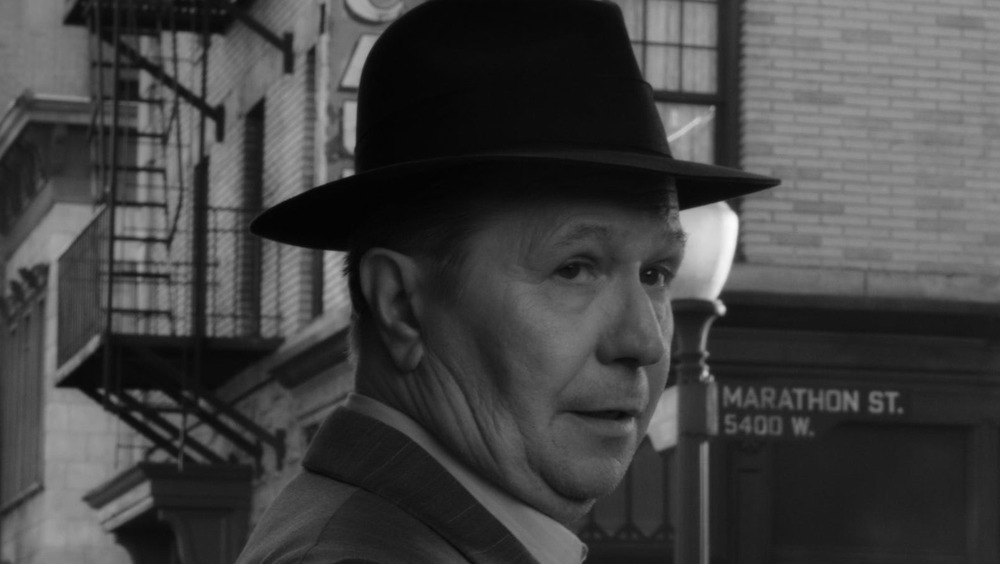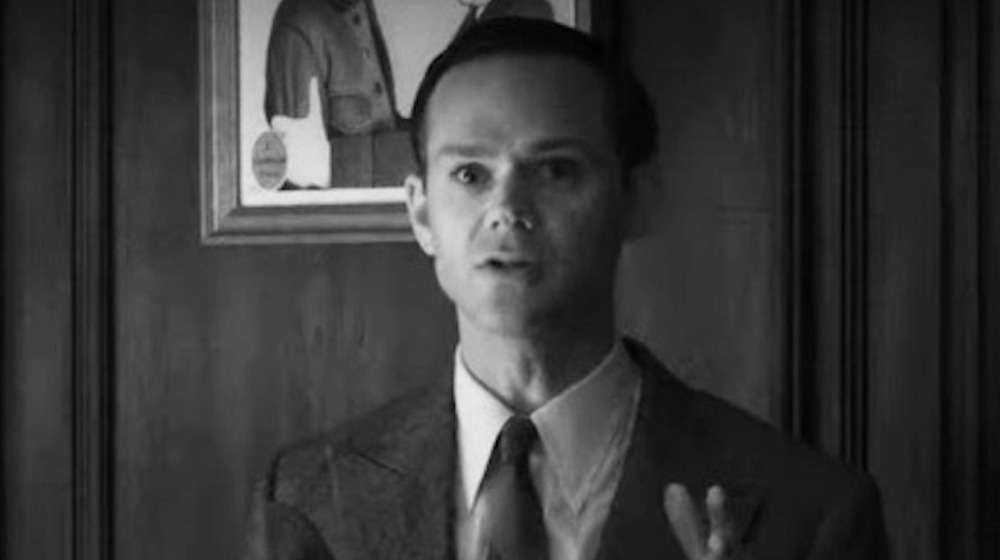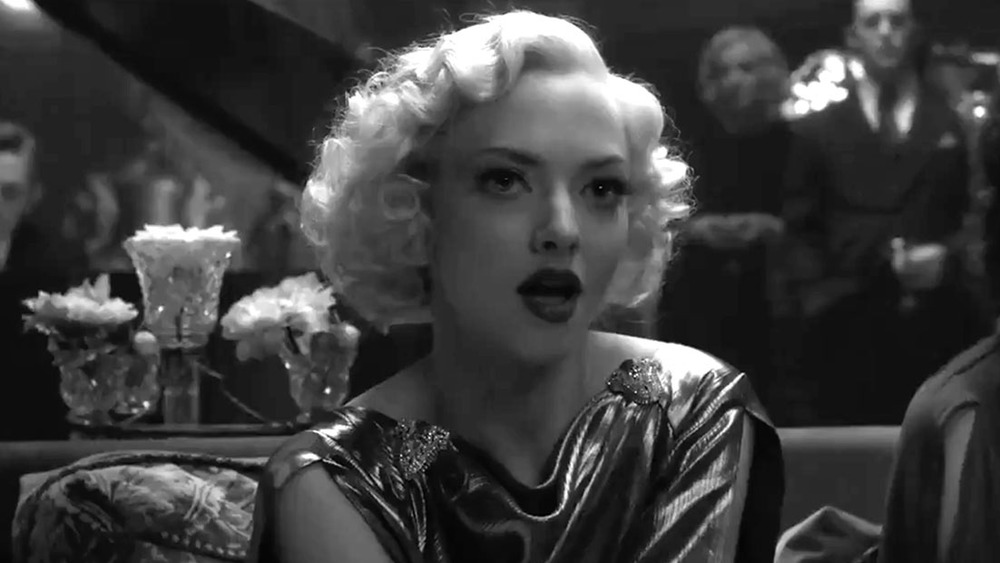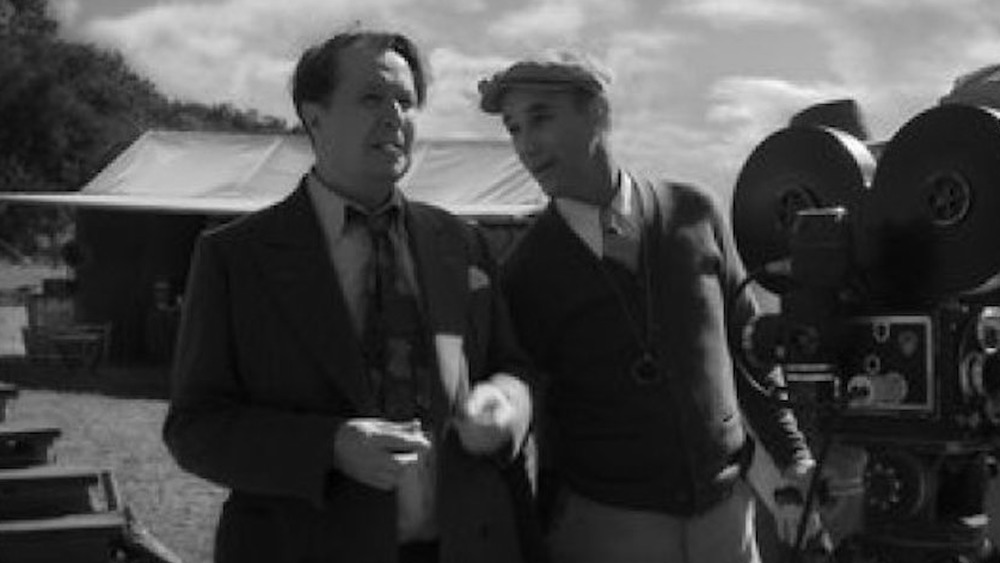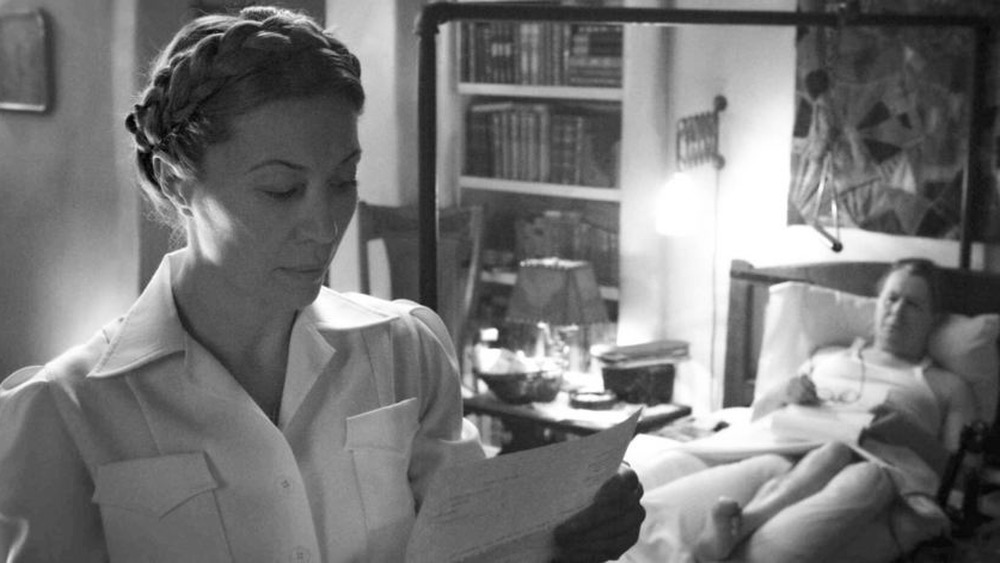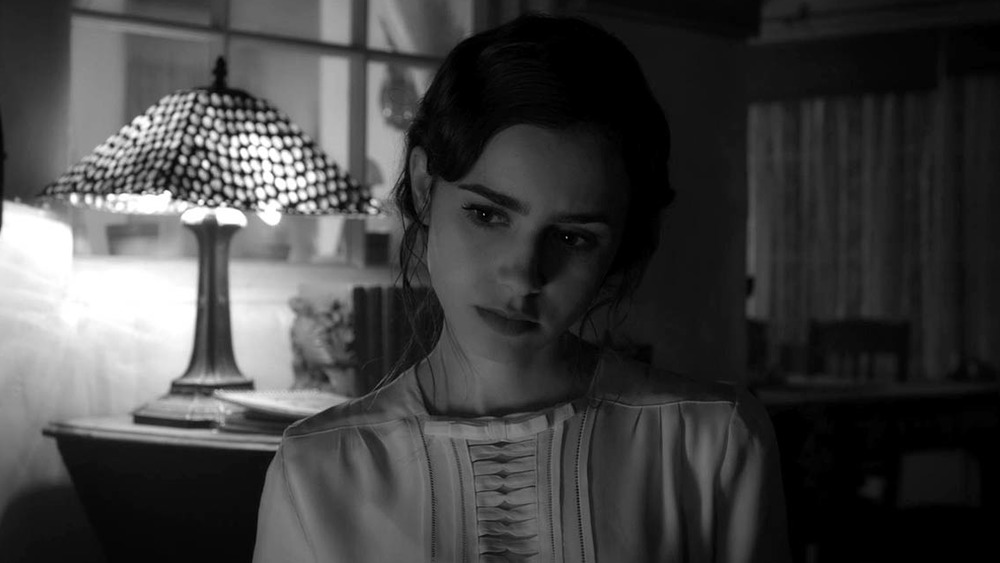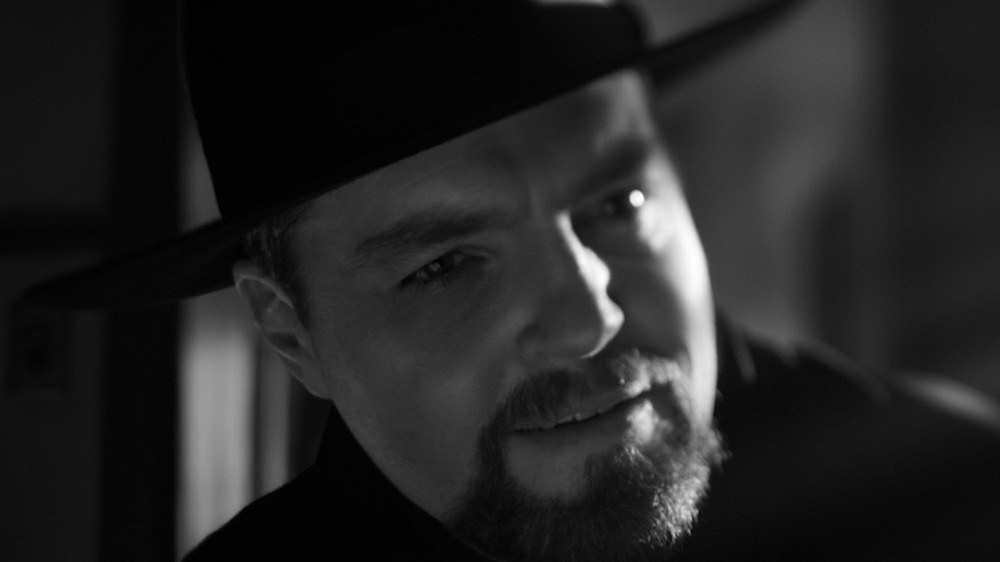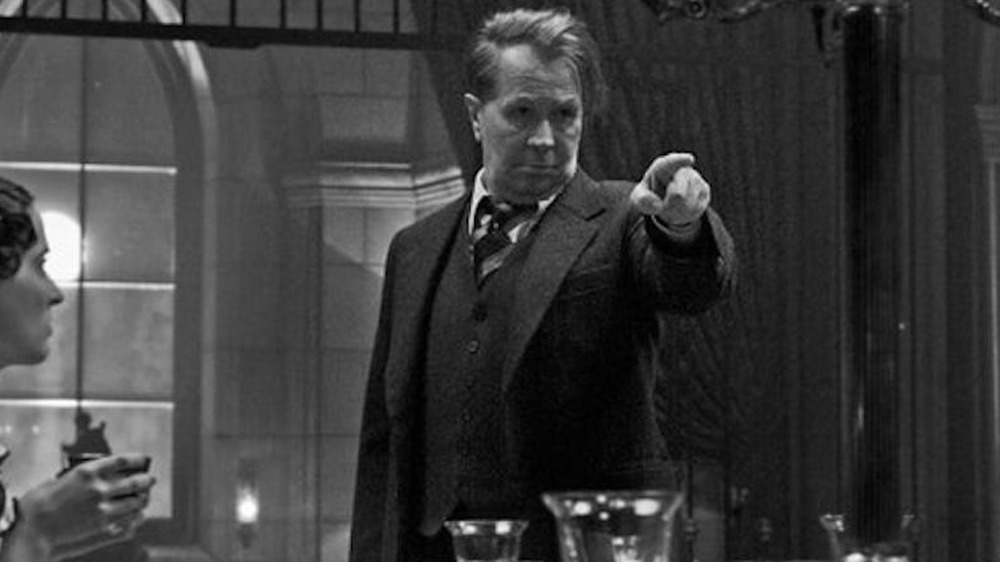Times Mank Lied To You
After bringing to the screen such expertly crafted and thoroughly modern tales of human nastiness, including Seven, Fight Club, and Gone Girl, director David Fincher set his filmmaking sights on the Golden Age of Hollywood, in particular the inspiration and creation of the screenplay of Citizen Kane, the 1941 film about the death of a sad tycoon universally regarded as one of the best movies ever made. Mank, which hit theaters and Netflix in late 2020, tells how screenwriter Herman J. Mankiewicz (Gary Oldman), or "Mank," wrote Citizen Kane, a thinly veiled attack on newspaper magnate William Randolph Hearst (Charles Dance) and his orbit of associates.
Mank was made from a script about scripts, and Fincher employed one written by his late father, Jack Fincher. It's largely a thoroughly researched, heavily detailed, and very accurate movie, but as with all real-life stories turned into film, liberties had to be taken. Certain events and characters are invented, condensed, combined, clarified, or made more cinematic. Here are the moments in Mank when the truth is at least a little bit different than fiction.
The telegram in Mank is questionable
Mank flashes back and forth between events that occur over the course of a decade. One of the earliest chronological events occurs in 1930, when former journalist and playwright Herman J. Mankiewicz sends out a telegram to recruit other esteemed writers to join him in California and also apply their skills with words to film. Mank successfully persuades writer Charles Lederer (Joseph Cross) to give screenwriting a try, but it's suggested that he's not all that discriminating, apparently sending an identical telegram to "anyone who can rub three words together."
While Mankiewicz may have sent out multiple telegrams, he was a bit more choosy in who he approached (if not how he approached them), enlisting just a handful of recruits, including his brother Joseph L. Mankiewicz and Ben Hecht. In his memoir A Child of the Century, Hecht recreates the telegram, which reads: "Will you accept three hundred dollars to work for Paramount Pictures. All expenses paid. The three hundred is peanuts. Millions are to be grabbed out here and your only competition is idiots. Don't let this get around." In Mank, that telegram doesn't go to Hecht but to Lederer.
Marion Davies' life was very different than what's depicted in Mank
Probably the reason that Mank screenwriter Jack Fincher made Charles Lederer a protégé of Herman J. Mankiewicz, rather than Ben Hecht, is because of Lederer's connection to the film's storyline. Lederer's aunt was Marion Davies (played in Mank by Amanda Seyfried), mistress of William Randolph Hearst and thus the inspiration for the Citizen Kane character Susan Alexander Kane. In Mank, Lederer shows the potentially incendiary Citizen Kane screenplay to Davies, but in her 1975 memoir, The Times We Had: Life With William Randolph Hearst, the actress states that she never saw the script before the film hit theaters, and even then, she didn't go see it. Nowhere in her memoir does she mention a moment depicted in Mank, in which she pleads with Mankiewicz to stop the release of Citizen Kane.
That's one of many Mank/Davies scenes invented by filmmakers. The two didn't meet for the first time at Hearst's California estate, when Davies was filming a burned-at-the-stake scene for a religious film — because Davies never starred in a film of that nature. Nor were any of her movies ever filmed on Hearst's grounds, and there's little record of her and Mankiewicz even knowing each other.
Herman Mankiewicz wasn't upset over Upton Sinclair's political failure
A movie protagonist, even one based on a real figure, must have some kind of metaphorical fire, an inspiration that prompts them to take the journey that will comprise the plot of the film. In Mank, Herman J. Mankiewicz is motivated to write Citizen Kane, a takedown of William Randolph Hearst, a cutthroat and elite businessman, because of the latter's direct involvement in the crushing defeat of avowed socialist and champion of the people Upton Sinclair when he ran for governor of California in 1934. Mank, according to Mank, found himself on the far left of the political spectrum, and seeing an ally like Sinclair (played in the film by Bill Nye) get crushed by associates of Hearst's interest-protecting media machine stuck in his craw for years.
According to Vox, this is all an invention of screenwriter Jack Fincher, who needed to clearly define for the audience why Mank would bother making Citizen Kane, as well as draw parallels between the life story of Hearst and that of Charles Foster Kane. Mankiewicz was in all likelihood more of a moderate, if not a conservative. Mank even, confusingly, hints at that. Labor unions are usually aligned with the political left wing, and in the film, Herman Mankiewicz won't join a Hollywood talent guild.
The tragic story of Shelly Metcalf isn't real
Part of what dooms Upton Sinclair's 1934 California gubernatorial run is a smear campaign by MGM, which doesn't want an anti-business socialist to be the most powerful man in the state. The well-funded studio produces a series of newsreels that cast Sinclair in an extremely bad light, and he indeed goes down to defeat, despite Mankiewicz's attempts to get the reels pulled from distribution via his friendship with Marion Davies.
While these newsreels are a real thing, the manner in which they were produced isn't quite as the film would have viewers believe. In Mank, they're directed by test shot director Shelly Metcalf (Jamie McShane), who jumps at the opportunity to work on something that was ordered personally by studio boss Irving G. Thalberg, thinking that it would will allow him to direct features for MGM in due time. Metcalf, suffering from Parkinson's disease already, ultimately takes his own life due to his guilt over the Sinclair-reputation-killing films.
Making this tragic Mank subplot significantly less tragic is the fact that Shelly Metcalf is not a real person who worked for MGM in the 1930s — he was invented by filmmakers. As noted by Town & Country, the newsreels were actually helmed by a go-getter of a young director named Felix Feist, who parlayed his work on the special project into directing feature films by the 1940s.
Fraulein Frieda didn't help Herman Mankiewicz recover
Herman J. Mankiewicz may not have been an Upton Sinclair-supporting socialist, as Mank may suggest, but he also didn't support the activities of the far political right, which, in the 1930s, at its most extreme, included the fascism advocated by Adolph Hitler. Mank mentions that its subject once saved an entire village from the onslaught of the Nazis, but that's a generalization about the screenwriter's little-known good deeds.
According to Sydney Ladensohn Stern's The Brothers Mankiewicz, Mankiewicz donated to relief agencies and helped a number of European refugees find work and reestablish their lives. Such charitable deeds are conflated with that of a character in the film named Fraulein Frieda (Monika Gossmann). She's part of the small support staff (along with secretary Rita Alexander and minder John Houseman) when Mankiewicz decamps to Victorville, California, to sober up, recuperate from a broken leg suffered in a car accident, and write Citizen Kane. Mankiewicz did convalesce in this manner with Alexander and Houseman but not Fraulein Frieda, a combination nurse and physical therapist who later worked as his housekeeper. Mank indicates that she was a resident of village that Mankiewicz liberated and saved from the Nazis. Mankiewicz probably didn't have a nurse by that name, nor did he help save an entire village all at once.
The character of Rita Alexander was fleshed out by filmmakers
Mank is about how Herman J. Mankiewicz is who really wrote Citizen Kane (not Orson Welles), but the individual who put the words on the page wasn't Mankiewicz at all but stenographer, assistant, and longtime ally Rita Alexander, portrayed in the film by Lily Collins. During his stay at a ranch in Victorville, California, Mankiewicz dictated the script to Alexander, who typed and cleaned it up.
Alexander was an actual figure who worked with and for Mankiewicz for years, although the vast majority of her characterization in the film was created by screenwriters, along with Collins herself. "Rita is, of course, a real person, but there's little information to be found about her, other than that she's a stenographer from England and her husband was in the war," Collins told Vogue. The Mank team decided to make Alexander an encouraging and supportive character for Mankiewicz, the film's main character, because it could advance the plot if she inspired him to do what he did. But there's little real-life evidence confirming any actual incidences of that. Collins said she was only even ever able to see two photos of Alexander.
The $10,000 moment was more complicated in reality
According to Wellesnet, the idea that Orson Welles wanted full credit for the Citizen Kane screenplay, leading him to offer writer Herman Mankiewicz $10,000 to take his name off the script, was an old Hollywood rumor popularized by "Raising Kane," a New Yorker article written by influential film writer and critic Pauline Kael in 1971. Welles claims he never offered Mankiewicz such a princely bribe (worth about $200,000 in 2020 money), but the legend persisted to the point where Jack Fincher dramatized the scene in his Mank script, including the part where Welles gets so mad over Mankiewicz demanding credit for his work that he throws over some furniture, leading Mankiewicz to write the Citizen Kane scene where the title character smashes up his mistress' bedroom.
The real Mankiewicz wrote that part after an actual Welles tantrum, albeit a different one: Months after credits were finalized, an angry Welles reportedly threw a Sterno can at collaborator John Houseman.
Mank didn't barf on William Randolph Hearst
One of the most memorable scenes in Mank is also the grossest. Herman J. Mankiewicz attends a fancy dinner at the palatial home of media tycoon William Randolph Hearst, the inspiration for Citizen Kane, the masterwork which he helps write. During the meal, Mank becomes extremely ill and graphically vomits up the contents of his stomach. Mankiewicz was known throughout Hollywood for always having a perfectly executed quip at the ready for any situation, even during a time of great gastrointestinal distress. "Don't worry," he remarks. "The white wine came up with the fish."
It's a line so perfect that it couldn't possibly be real, the way Mank makes fun of himself while also cutting the tension by invoking an axiom about etiquette, in that it's considered proper to serve white wine with fish. Amazingly, Mankiewicz actually did make this joke at a party, but he didn't say it to Hearst. According to Sydney Ladensohn Stern's The Brothers Mankiewicz, he said this when he threw up at a dinner party held by movie producer Arthur Hornblow Jr., who was apparently very big on proper etiquette.
